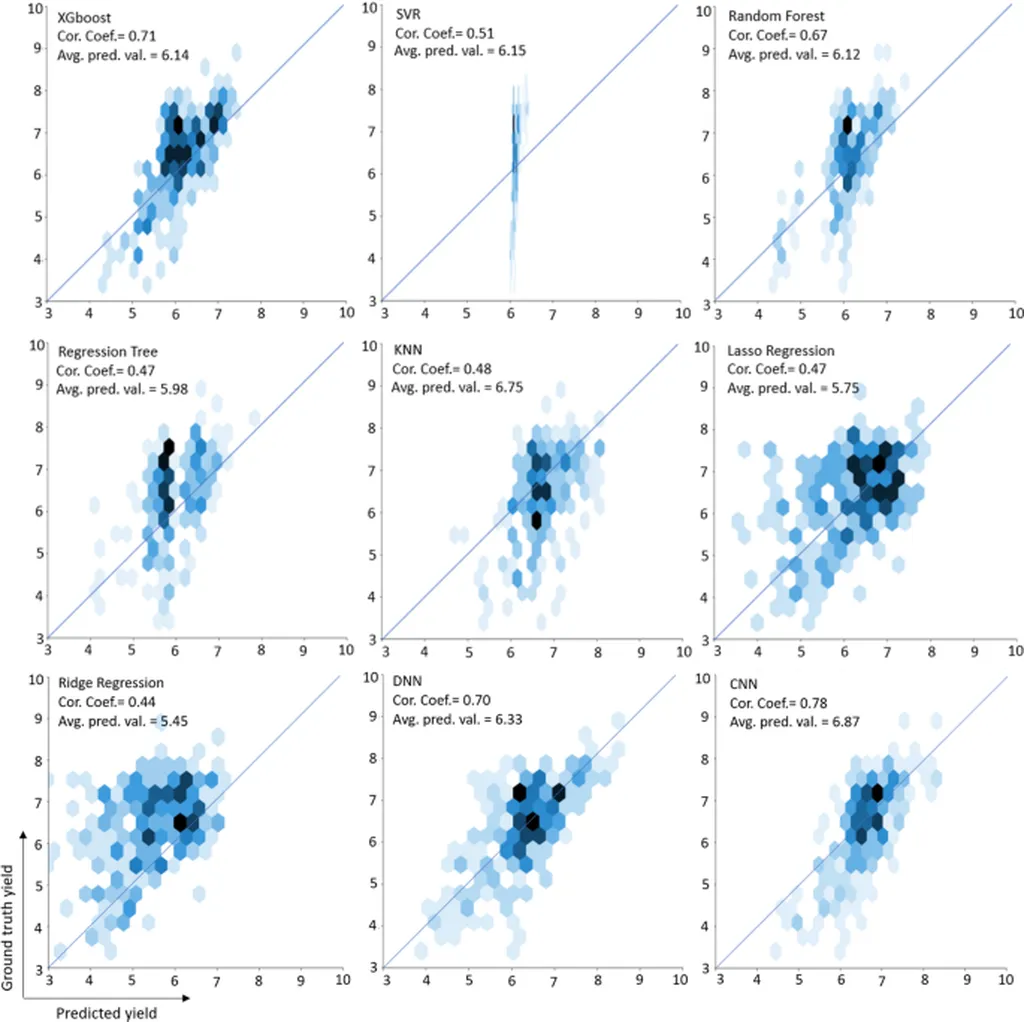In the heart of China’s agricultural landscape, a groundbreaking study led by ZHAO Peiqin from Hubei University and her team at the Beijing Academy of Agriculture and Forestry Sciences is revolutionizing winter wheat yield prediction, particularly under drought conditions. Their research, published in the journal ‘智慧农业’ (translated as ‘Smart Agriculture’), introduces an improved hierarchical linear model (IHLM) that promises to enhance the accuracy of crop yield estimations, a critical factor for national food security and economic stability.
The team’s innovative approach combines the maximum enhanced vegetation index-2 (EVI2max), meteorological data, and observed winter wheat yield data from 160 agricultural survey stations in Shandong province over four years (2018-2021). The model’s accuracy was rigorously validated using a subset of the data, ensuring its reliability. “We aimed to address the variability in meteorological factors that often pose a challenge to accurate crop growth predictions,” explained ZHAO Peiqin, the lead author of the study. “By calculating relative meteorological factors, we significantly reduced the impact of inter-annual differences in weather data.”
The IHLM model’s performance was compared against popular machine learning models like random forest (RF), Support Vector Regression (SVR), and Extreme Gradient Boosting (XGBoost). The results were impressive. The HLM model, improved with relative meteorological factors, achieved a Pearson correlation coefficient of 0.76, a root mean squared error (RMSE) of 0.60 t/hm2, and a normalized RMSE (nRMSE) of 11.21%. When the drought weather index reduction rate was incorporated, the model’s accuracy further improved, with the RMSE decreasing by 0.48 t/hm2 and the nRMSE dropping by 28.64 percentage points.
The implications of this research extend beyond the fields of Shandong and Henan provinces, where the model was tested. The IHLM model’s ability to provide intuitive interpretations and handle hierarchical data makes it particularly suitable for processing complex agricultural data. “This model is a game-changer for the agricultural insurance industry,” noted LIU Changbin, a co-author from the Beijing Academy of Agriculture and Forestry Sciences. “It enables more accurate predictions of winter wheat yield under drought conditions, which is crucial for designing insurance products, setting rates, and managing risks.”
The commercial impact of this research is substantial. Accurate yield predictions can help farmers make informed decisions, optimize resource allocation, and mitigate financial risks. For the agricultural insurance sector, this means more precise risk assessments and better-informed policy decisions. The energy sector also stands to benefit, as improved agricultural productivity can lead to more efficient use of resources and reduced environmental impact.
As the world grapples with the challenges of climate change and food security, innovations like the IHLM model offer a beacon of hope. By enhancing our ability to predict crop yields under adverse conditions, this research paves the way for more resilient and sustainable agricultural practices. The study’s findings, published in ‘智慧农业’, underscore the importance of integrating advanced technologies and data-driven approaches in modern agriculture.
In the words of ZHAO Peiqin, “This research is not just about improving a model; it’s about empowering farmers, insurers, and policymakers with the tools they need to navigate an uncertain future.” As we look ahead, the IHLM model and similar innovations will undoubtedly play a pivotal role in shaping the future of agriculture and ensuring food security for generations to come.

